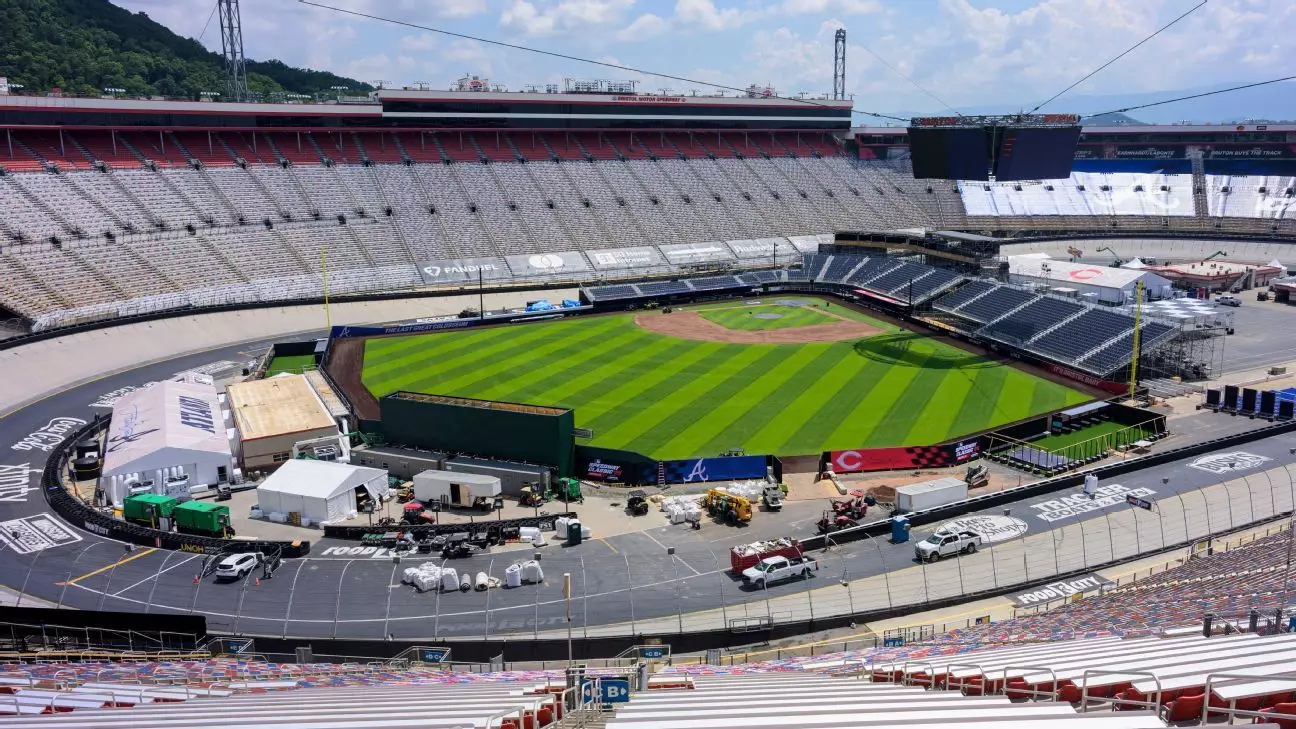Bristol Motor Speedway stands as one of NASCAR’s most iconic venues—a place built for roaring engines and heart-pounding races. Yet, in a remarkable turn of events, this historic racetrack recently stepped onto the national stage in the world of baseball. Hosting a record-breaking Major League Baseball game, the track’s infield was transformed into a sprawling baseball diamond, exemplifying a bold, unconventional approach to leveraging existing infrastructure for multi-sport versatility. However, this transition was not merely a matter of laying down grass; it was a logistical and engineering feat demanding innovative thinking and precise execution.
The challenge was compounded by the race against time. Once the baseball game concluded, the facility was expected to revert swiftly, restoring its racing identity for NASCAR’s playoff race—a high-stakes event critical for the sport’s championship narrative. This dual-purpose use testifies to Bristol’s adaptive potential, but it also underscores its vulnerability. Any mistake or delay risks compromising the integrity of either event. This ambitious schedule demands meticulous planning, high-level coordination, and the willingness to embrace complexity—qualities that truly set resilient venues apart.
Engineering Marvels and Resourceful Rebuilding
Converting a professional baseball field into a race-ready track involves a blend of technical mastery and resourcefulness. The construction team employed 17,500 tons of gravel to level the infield surface, along with a substantial infusion of 340 tons of Pennsylvania clay to ensure an authentic playing surface. While these materials form the foundation of a baseball diamond, their removal afterward presents a daunting challenge. The process necessitates careful planning to repurpose these resources—some of which are already slated to benefit local recovery efforts following Hurricane Helene’s devastation.
Equally demanding was the reconstruction of the infield’s structural elements. The team dismantled grandstands, broadcast booths, and pit walls, meticulously rebuilding them to meet the rigors of NASCAR. The concrete walls, poured and cured on a strict schedule, symbolize the complexities involved in radically altering a venue’s purpose within tight time constraints. Swift, the senior vice president of Speedway Motorsports, emphasizes that these are “things we like,” reflecting an admirable attitude toward adversity. The willingness to tackle such substantial tasks with optimism demonstrates a resilient spirit that defines Bristol’s operational ethos.
Community and Future Opportunities: Beyond the Immediate Race
Beyond the technical challenges, Bristol’s multi-sport experiment reveals a savvy approach to community engagement and future expansion. Materials salvaged from the transformation, including 2x4s and plywood, are being thoughtfully redirected to aid hurricane recovery efforts—highlighting a deeper sense of social responsibility. This reuse not only minimizes waste but also cements Bristol’s position as a venue committed to utilizing its resources for good.
Looking ahead, the success of this baseball experiment could pave the way for even more diverse events, such as potential NHL exhibitions or other major sporting attractions. The venue has demonstrated that it can host a variety of sports without compromising its core identity, and that adaptability might be the key to its longevity in an ever-evolving sports landscape. The willingness to push boundaries — to switch seamlessly from NASCAR to baseball and potentially beyond — indicates an innovative mindset capable of redefining what a racetrack can be in the 21st century.
Without doubt, Bristol’s recent endeavors reflect a bold spirit of reinvention. While the technical hurdles are significant, the broader implications for sports management and venue versatility are even more compelling. This race-to-restore cycle exemplifies resilience, creativity, and strategic foresight—traits that will surely inspire other venues to rethink their purpose in a rapidly changing sporting world.


Leave a Reply